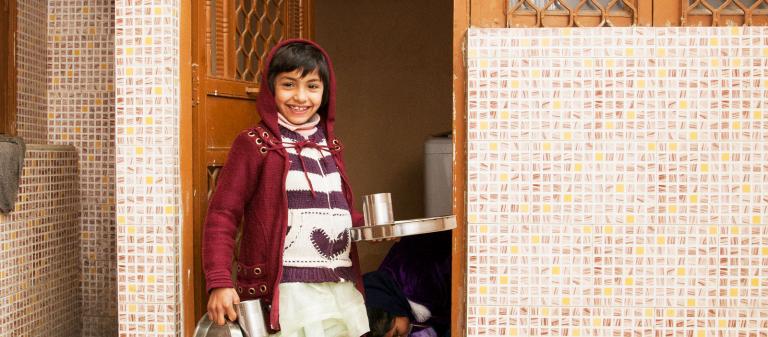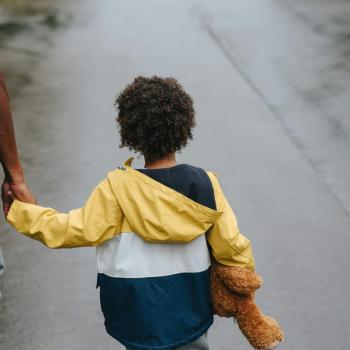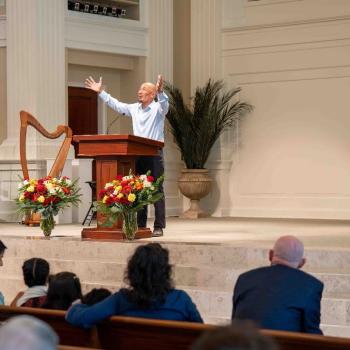Wills Point, Texas – GFA Special Report (Gospel for Asia) – Discussing the global problem of modern slavery – despite being difficult to eradicate, there is still hope.
Champions of Change
Clearly, governments have a major role to play in ending slavery, and leaders are taking steps in places like India, where tougher anti-trafficking laws have been pursued.

In 2016, child rights activist and Nobel Peace Prize winner Kailash Satyarthi launched the global “100 million for 100 million” campaign, which challenges the world’s children living in better circumstances to speak up on behalf of disadvantaged children. Then-President Pranab Mukherjee’s support of the campaign has been acknowledged as part of a “historic move towards ending child slavery in India.”
Of 161 countries profiled in the Global Slavery Index, 150 governments provide some kind of services for victims, 124 have criminalized human trafficking, and 96 have national action plans to do something about it.
Perhaps fittingly, the strongest government lead has been taken in England, where William Wilberforce and other campaigners led the fight to end the slave trade of the 19th century.

Naming modern slavery the “greatest human rights issue of our time,” the U.K. government appointed a slavery commissioner to lead its efforts and became the first to develop a modern slavery initiative in 2014. The following year it passed the Modern Slavery Act, requiring business action. It means that U.K.-based companies with total annual global incomes of more than $50 million have to publish transparency statements that detail what they are doing to ensure that the supply chains they are part of do not use slave labor.
Global trade is so complex these days that “it is near certain that slavery can be found in a supply chain of every single company, and it is near impossible to guarantee a slavery-free product,” Anti-Slavery International acknowledges.
Meanwhile, the U.S. Department of Labor has a list of almost 150 goods from 75 countries believed to be produced by child or forced labor. It includes matches and footwear from Bangladesh, bananas from Belize, fireworks from China and soccer balls from India.
Many migrant workers are lured from their home country by promises of a new life—only to find a darker reality.

The complexity doesn’t give businesses a pass, however.
“Our homes and our businesses carry the imprint of modern slavery,” says Forrest, the billionaire founder of Walk Free Foundation. “As business leaders, it is our responsibility not to turn a blind eye, or to pretend that we are unaware, or believe that the issue is too complex to deal with.”
An example of effective action is IKEA’s IWAY code, in which the furniture giant sets out standards for its suppliers, including the right to make unannounced site visits to direct partners and contractors. In the U.K., there has been a move among hotel operators to start a network to tackle human trafficking in the industry.
GFA’s Work Among Victims of Modern Slavery
Among the many unnamed helpers are scores of Gospel for Asia (GFA)-supported workers. They care for women and girls ensnared in the red-light districts of some of Asia’s major cities, and they run Bridge of Hope (BOH) centers that provide schooling and medical care, aiming to help children escape forced labor and provide them with a better future.
One who was helped is Nadish. He was held as a slave for two years from age 9. During his years in slavery, he was locked overnight in a room near the animals whose waste he had to clean up and was given very little food. Though he eventually managed to escape and find his way back home, he continued to struggle with the effects of his imprisonment and ill-treatment. Throughout his recovery, Nadish had his Bridge of Hope teachers to comfort, pray for and love him.
“A,” who was mentioned in the first part of this report, was eventually rescued from her enforced laborer by authorities. She has been healing from her ordeal at a home for abandoned and at-risk children where Gospel for Asia (GFA)-supported workers serve. No longer made to work, “A” can be a child again. Playing with children her age and learning songs and dances with other girls, she enjoys being able to attend the home.
“I like this place so much; I like all these didis (older sisters),” “A” says. “They work hard for me and for all of us. I like this place and I don’t [want] to leave this place and go to any other place or orphanage because of the love and care that we get here.”

Through GFA’s ministry, children and their families don’t only receive practical help; they also hear about God’s love for them.
“It’s amazing how the love of Christ brings hope to the poorest of society and fills the hearts of these children with joy,” says Dr. K.P. Yohannan, founder and director of Gospel for Asia (GFA).
Gospel for Asia (GFA)-supported work with children like Nadish and “A” is a critical part of the anti-slavery effort. Prevention is a major part of the battle. Giving children and families hope for a better future through education offers them something to turn to other than child marriage or bonded labor, and children who have people carefully watching out for them—like Bridge of Hope teachers—and who will be missed if they vanish are less vulnerable to trafficking. The daily meal, medical care and school supplies provided for students ease parents’ financial burden, enabling them to focus their hard-earned income on other crucial family needs.
While slavery is a global problem that’s difficult to eradicate, there is still hope. As Forrest said, “This is the choice of man, so the choice of man can stop it.”
21st Century Slavery & Human Trafficking: Part 1 | Part 2
This article originally appeared on gfa.org
To read more on Patheos on the desperate issue of ongoing modern slavery, go here.
Click here, to read more blogs on Patheos from Gospel for Asia.
Go here to know more about Gospel for Asia: GFA.net | Wiki | Flickr | GFA | GFA.org













